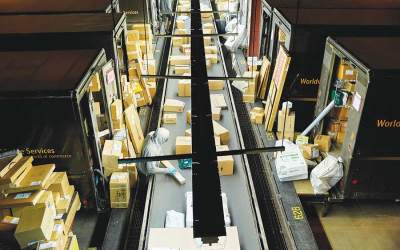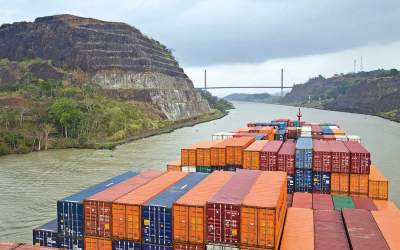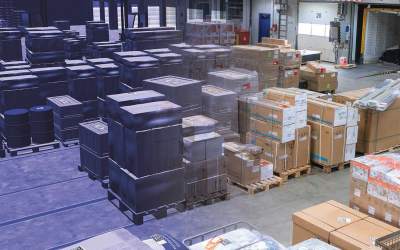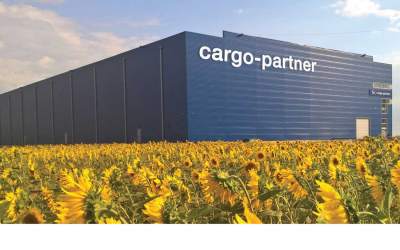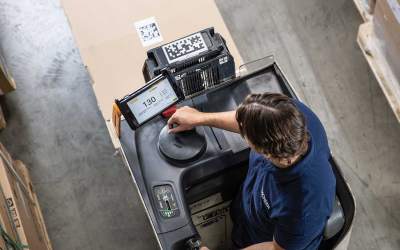2024 Global Logistics Outlook: Crisis mode lingers
Figuring out how to emerge from this ongoing maelstrom will remain a challenge for shippers everywhere in 2024. With that in mind, let’s focus a few areas around the globe where extra care and diligent logistics management will need to be applied to keep operations—and budgets—in check.
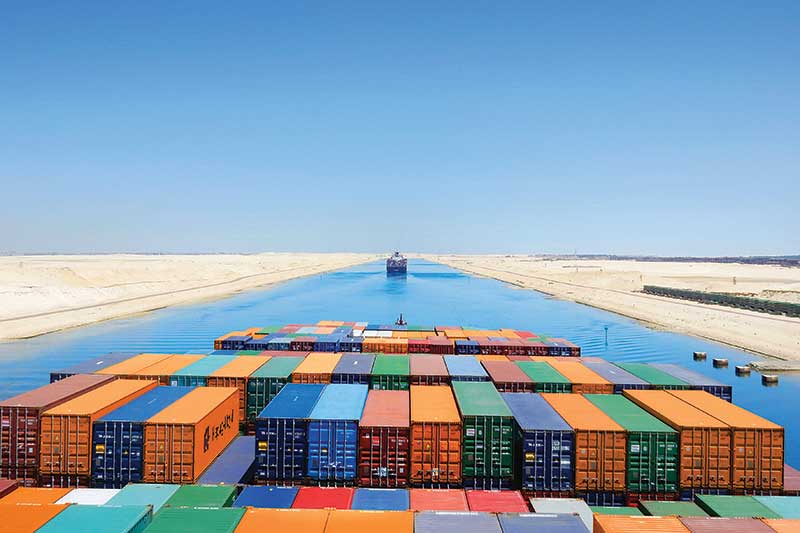
Many in the freight transportation and logistics industry were hoping that 2023 would be the year that things got “back to normal.”
Instead, one crisis followed the other: a sluggish global recovery from the pandemic; Russia’s ongoing war of aggression in Ukraine; terrorist attacks on international trade routes; political conflicts in new regions; and growing environmental problems have led to disruptions in global supply chains.
Unfortunately, figuring out how to emerge from this ongoing crisis mode will remain a challenge for shippers everywhere in 2024. With that in mind, let’s focus a few areas around the globe where extra care and diligent logistics management will need to be applied in order to make the most of our situation. Or, as Winston Churchill once said: “Never let a good crisis go to waste.”
Geopolitical & environmental pressures
Shipping has become a risky business on several international trade routes, for example via the Suez Canal and the Red Sea. The war that started with the attacks of the Palestinian militant group Hamas on Israel in October 2023 is increasingly expanding into a regional conflict.
In November, the Houthis, an Iran-backed rebel group that supports Hamas and controls a large part of Yemen, started drone and missile attacks on merchant vessels in the Red Sea. Major shipping companies including MSC, MAERSK, Hapag-Lloyd, and others paused Red Sea journeys and decided to use the longer route around the Cape of Good Hope.
This is a major disruption on this important international trade route, as normally nearly 10% of global trade is routed via the Suez Canal and the Red Sea, and around 50 ships pass through the Suez Canal every day, according to the Suez Canal Authority.
Major shipping lines reckon that the transit times of container ships on the route from the Far East to Northern Europe around the Cape will be extended by almost 10 days at an average speed of around 15 knots.
As well as lengthening transport routes, the rerouting of ships also has an impact on freight rates. Data analyst Xeneta predicts that rates could increase by 100% on certain routes. The United States has launched the multinational naval operation “Operation Prosperity Guardian” (OPG) to protect shipping. Among the countries that joined the alliance are the UK, Canada, France, Bahrain, Norway, and Spain.
There are also concerns that the tensions between China and the United States could lead to disruptions in shipping through the Taiwan Strait in case of an escalation. According to U.S. news agency Bloomberg, an average of 240 merchant ships transporting goods and raw materials to and from Taiwan, South Korea, and China passed through the Taiwan Strait every day in 2023.
A blockade of this important trade route would cause considerable disruptions in the global supply chain, especially for chips and other electronic components.
Another bottleneck for merchant shipping is the approximately 80-kilometer-long Panama Canal, which connects the Atlantic with the Pacific in Central America. According to the Panama Canal Authority, around 14,000 vessels pass through the waterway every year and nearly 6% of world trade is shipped through the canal.
Low water levels due to the lack of precipitation have led to severe shipping problems. As an alternative to the canal passage, importers on the U.S. East Coast, for example, could route their freight via West Coast ports such as Los Angeles/Long Beach to avoid delivery delays and rate surcharges (see Ocean Trends).
Asia in focus
Recent disruptions in the supply chain have forced many companies to reevaluate their strategies.
Buzzwords like “nearshoring,” “reshoring,” and “friend-shoring” (converting supply chains to politically friendly economies) are being discussed globally. In view of the political and economic developments in China, manufacturers, suppliers, and logistics providers are focusing more and more on Southeast Asia, as well as countries such as Japan.
According to the the Organization for Economic Co-operation and Development (OECD), Southeast Asia is one of the most dynamic and fastest growing regions in the world. Various production clusters have successfully established themselves in the ASEAN states in recent years. Examples include the electronics sector in Malaysia and Vietnam; the automotive and food sectors in Thailand; mechanical engineering and petrochemicals in Indonesia; the clothing and food industry in the Philippines; and the production sectors for semiconductors, bio-pharmaceuticals, and aerospace components in Singapore.
Growing production capacities also require an expansion of the Southeast Asian logistics network. In addition to Asian logistics providers, U.S. companies such as FedEx are also investing in the expansion of intercontinental logistics services. Better connections to markets in Southeast Asia and the rest of the world will be achieved by expanding airfreight connections.
At the end of last year, FedEx introduced a new evening flight connecting Asia and Europe four times a week from Ho Chi Minh City via its Asia-Pacific hub in Guangzhou, China. With it, exporters shipping from Southern Vietnam will benefit from faster transit times, and additional flights provide more capacity to Asia, Europe, and the U.S.
FedEx is also investing in Asian infrastructure to meet growing customer demand in the region. The opening of the new bonded warehouse in Batam, Indonesia, and a new gateway facility in Clark, Philippines, will enable faster processing of shipments from the Free Trade Zones and improve transit times.
For many years, Japan stood in China’s shadow and Japanese logistics companies were barely visible globally. Benefiting from U.S. and European efforts to become less dependent on China, the Japanese economy is growing, and Japanese logistics companies are expanding their international presence.
In 2023, the acquisition of the Austrian logistics company Cargo-Partner by Nippon Express, Japan’s largest logistics company, attracted worldwide attention. With the opening of the Mesa Logistics Center, a dedicated semiconductor warehouse in Arizona, the company is also focusing more strongly on the U.S. market. With these and other investments, Nippon Express intends to become a global player.
Asian carriers expanding service
Asian shipping companies are also extending their global scope. The Singapore-based liner shipping company Ocean Network Express (ONE) decided to invest in three terminals in November 2023. This gives ONE a 20% stake in the Dutch terminal Rotterdam World Gateway (RWG) and 51% each in the container terminal TraPac and YUSEN Terminals (YTI).
TraPac is a container terminal operator and stevedoring company that offers its services in Los Angeles and Oakland. YTI provides the same services in Los Angeles. With a combined capacity of 4.3 million TEU annually, the acquisition of these two terminals strengthens ONE’s position on the U.S. West Coast.
RWG operates a highly automated container terminal in the port of Rotterdam with an annual capacity of around 2.35 million TEU. These strategic acquisitions enable ONE to manage logistics processes directly at the container terminals, thereby contributing to improved supply chain security and customer satisfaction.
The Taiwanese shipping group Evergreen also expanded its services in Europe and the U.S. In August 2023, it acquired a 20% stake in the Dutch Euromax container terminal in Rotterdam for €72.5 million ($109 million).
In the same month, Evergreen’s largest vessel, “Ever Max,” called in the Port of Baltimore for the first time. The 15,432-TEU container ship was assigned to the AWE2 Asia-U.S. East Coast loop on the route between the Asian ports of Xiamen, Kaohsiung, Hong Kong, Yantian, and the North American ports of Savannah, Newark, Norfolk, and Baltimore.
AI a global game changer?
In times of crisis like these, new technologies such as Artificial Intelligence (AI) make an important contribution to increasing supply chain visibility and optimizing processes to respond to disruptions more flexibly.
According to Henrik Moen, data manager for AutoStore, a developer of automated order-fulfillment solutions, AI has become a game changer, as it makes an important contribution to predictive analytics by analyzing data and forecasting future trends, events, and risks. Furthermore, it can be utilized in various fields of logistics, such as route optimization, warehouse automation, inventory management, customer service enhancement, or autonomous vehicles from trucks to drones.
Numerous companies in the logistics industry have launched AI pilot projects to gain initial experience with this new technology and integrate it into their operations. One of these companies is UPS. The logistics company has been using AI since October 2023 to optimize customs clearance to Europe.
Its AI-powered tool enables customers to automatically generate the right Harmonized System (HS) codes for their shipments to Europe. It is compatible with the EU’s electronic customs Import Control System 2 (ICS2), which collects data on all goods shipped to the EU before they arrive. According to UPS, the EU carries out almost 15% of global trade in goods.
The new digital solution will particularly benefit small- and medium-sized businesses outside of Europe, as they often don’t have the time or the expertise to create the correct HS codes. A pilot version of the tool has proven successful, generating correct customs codes for more than 1 million shipments during a test period, emphasizes UPS.
How AI can optimize groupage logistics has been proved by DACHSER in Germany. In close cooperation with the research institute Fraunhofer IML, the logistics provider has successfully tested an AI-driven digital twin pilot project called @ILO (Advanced Indoor Localization and Operations) in its two branches near Munich and Heilbronn.
It automatically creates and continuously updates a digital twin of all packages, assets, and workflows in a transit terminal. Special AI-based algorithms in the @ILO software interpret the data collected every second by hundreds of optical scanning units on the terminal’s ceiling. Using this data, they automatically and immediately identify and locate all packages. In the future, they will measure these as well.
This creates a complete, always up-to-date image of the terminal and its processes—a digital twin. Integrated into practical workflows, it has already proved its worth in the two @ILO pilot transit terminals. Some process sequences performed between inbound and outbound goods were completed 15% to 35% faster by eliminating actions such as scanning barcodes by hand and manually inventorying packages each day.
As a result, short-distance transport vehicles can start making deliveries earlier in the day, which gives drivers a head start in morning rush-hour traffic.
“By using AI and automation technologies in groupage handling, we can deliver high quality and still meet complex customer requirements,” says Alexander Tonn, COO Road Logistics at DACHSER. “It also helps us overcome the challenges arising from the shortage of space and of skilled workers. New technologies such as the @ILO digital twin supply the real-time data we require, but the technology really starts to add value when it relieves and supports employees in their day-to-day work.”
There are also several shipping companies working out how to integrate AI into their daily operations and testing ChatGPT. Japanese shipowner Kawasaki Kisen Kaisha (“K”Line), for example, has started to use AIplicity Chat powered by ChatGPT API and provided by Japan Business Systems across “K” LINE offices in Japan. It’s an AI chat service based on the Azure OpenAI Service, which Microsoft offers on its Azure cloud.
“K”Line has decided to introduce this service for streamlining employees’ operations, encouraging the utilization of technology, and supporting the implementation of duties in a secure and reassuring environment.
To prevent data leaks, AIplicity Chat is designed in consideration of security. For example, it doesn’t make secondary use of the information entered. It stores the information exchanged on an internal network of offices in Japan in the Azure tenant.
Furthermore, “K” Line has prepared guidelines for the use of generative AI and has made them accessible across the company to make its personnel aware of the risks involved in inputting and outputting data.
The McKinsey Global Institute estimates that among industries globally, generative AI could add the equivalent of $2.6 trillion to $4.4 trillion annually in value across the 63 use cases it analyzed—a great opportunity and a benefit for the logistics industry as well.
Stefan Paul, CEO of the Swiss-based logistics company Kuehne + Nagel (KN) is convinced that if logistics providers exploit the entire potential from chatbots to robotics properly, they can create new business models and gain time that they can dedicate to their customers.
Indeed, by looking ahead, we can see crises as an opportunity to tap into new potential, develop new technologies and strategies, and thus generate new growth. The logistics industry has proven how flexible and resilient it is, even in difficult times.

Article Topics
Hapag-Lloyd News & Resources
EU Update 2024: Crises lead to growth 2024 Global Logistics Outlook: Crisis mode lingers Maersk and Hapag-Lloyd herald future plans for the ‘Gemini Cooperation’ Maersk continues to pause vessels in Red Sea and Gulf of AdenLatest in Logistics
Understanding the FTC’s ban on noncompetes UPS rolls out fuel surcharge increases U.S. rail carload and intermodal volumes, for week of April 20, are mixed, reports AAR Baltimore suing ship that crashed into bridge, closing port, costing jobs Intermodal growth volume remains intact in March, reports IANA Descartes announces acquisition of Dublin, Ireland-based Aerospace Software Developments Amid ongoing unexpected events, supply chains continue to readjust and adapt More LogisticsSubscribe to Logistics Management Magazine

Find out what the world's most innovative companies are doing to improve productivity in their plants and distribution centers.
Start your FREE subscription today.
April 2023 Logistics Management

Latest Resources


